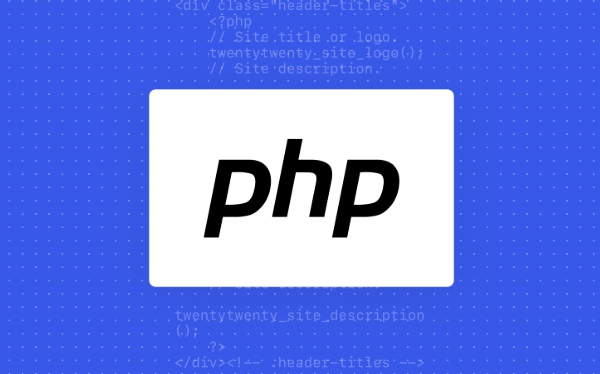To securely encrypt and decrypt strings in PHP using AES-256-CBC, follow these steps: 1. Generate a 32-byte encryption key and a 16-byte IV using openssl_random_pseudo_bytes. 2. Encrypt the data with openssl_encrypt, concatenating the IV with the encrypted result and encoding it with base64_encode. 3. Decrypt by decoding the base64 string, extracting the IV, and using openssl_decrypt with the same key and IV. Ensure unique IVs per encryption, store IVs with encrypted data, keep keys secure, and consider AES-GCM for authenticated encryption.

When you need to securely store or transmit data in PHP, encrypting and decrypting strings becomes essential. PHP offers several functions and extensions for encryption, but one of the most reliable and widely used is openssl_encrypt() and openssl_decrypt(). These functions are part of the OpenSSL extension, which is enabled by default in most PHP installations.

Here’s a simple and secure way to encrypt and decrypt a string in PHP using AES-256-CBC encryption.
Setting up a secure encryption key and IV
Before you start encrypting, you need two important values:

- A secret key (must be 32 bytes for AES-256)
- An initialization vector (IV) (must be 16 bytes for AES)
You can generate these like this:
$encryptionKey = openssl_random_pseudo_bytes(32); // 256 bits $iv = openssl_random_pseudo_bytes(16); // 128 bits
?? Important: You need to store the IV along with the encrypted data (it doesn’t need to be secret), and keep the encryption key secure (e.g., in environment variables or a secure config file).

Encrypting a string with openssl_encrypt
Once you have your key and IV, use openssl_encrypt() to encrypt the data:
$data = "This is a secret message.";
$encrypted = openssl_encrypt(
$data,
"AES-256-CBC",
$encryptionKey,
0,
$iv
);
echo base64_encode($iv . $encrypted); // Combine IV encrypted data for safe transport"AES-256-CBC"specifies the encryption method.- The
0is for options (you can leave it as default). - We concatenate the IV with the encrypted string so it can be used later for decryption.
- Using
base64_encodeensures the output is safe for storage or transmission.
Decrypting a string with openssl_decrypt
To decrypt, extract the IV from the beginning of the encoded string, then call openssl_decrypt():
$encryptedData = base64_decode($encodedData); // From earlier step
$iv = substr($encryptedData, 0, 16);
$actualEncrypted = substr($encryptedData, 16);
$decrypted = openssl_decrypt(
$actualEncrypted,
"AES-256-CBC",
$encryptionKey,
0,
$iv
);
echo $decrypted; // Should match original dataMake sure the key and IV used for decryption match exactly what was used for encryption.
Keeping encryption secure and practical
Here are a few things to keep in mind:
- Always use a unique IV for each encryption operation. Reusing an IV with the same key can compromise security.
- Store the key securely — never hardcode it in public code or expose it in logs.
- If you're storing encrypted data in a database, store the IV alongside it.
- Consider using authenticated encryption (like AES-GCM) if you need to verify data integrity as well.
That’s basically it. With openssl_encrypt and openssl_decrypt, you have a solid, modern way to handle encryption in PHP. Just make sure to handle keys and IVs correctly — the rest is straightforward.
The above is the detailed content of php function to encrypt and decrypt a string. For more information, please follow other related articles on the PHP Chinese website!

Hot AI Tools

Undress AI Tool
Undress images for free

Undresser.AI Undress
AI-powered app for creating realistic nude photos

AI Clothes Remover
Online AI tool for removing clothes from photos.

Clothoff.io
AI clothes remover

Video Face Swap
Swap faces in any video effortlessly with our completely free AI face swap tool!

Hot Article

Hot Tools

Notepad++7.3.1
Easy-to-use and free code editor

SublimeText3 Chinese version
Chinese version, very easy to use

Zend Studio 13.0.1
Powerful PHP integrated development environment

Dreamweaver CS6
Visual web development tools

SublimeText3 Mac version
God-level code editing software (SublimeText3)

Hot Topics
 PHP Variable Scope Explained
Jul 17, 2025 am 04:16 AM
PHP Variable Scope Explained
Jul 17, 2025 am 04:16 AM
Common problems and solutions for PHP variable scope include: 1. The global variable cannot be accessed within the function, and it needs to be passed in using the global keyword or parameter; 2. The static variable is declared with static, and it is only initialized once and the value is maintained between multiple calls; 3. Hyperglobal variables such as $_GET and $_POST can be used directly in any scope, but you need to pay attention to safe filtering; 4. Anonymous functions need to introduce parent scope variables through the use keyword, and when modifying external variables, you need to pass a reference. Mastering these rules can help avoid errors and improve code stability.
 How to handle File Uploads securely in PHP?
Jul 08, 2025 am 02:37 AM
How to handle File Uploads securely in PHP?
Jul 08, 2025 am 02:37 AM
To safely handle PHP file uploads, you need to verify the source and type, control the file name and path, set server restrictions, and process media files twice. 1. Verify the upload source to prevent CSRF through token and detect the real MIME type through finfo_file using whitelist control; 2. Rename the file to a random string and determine the extension to store it in a non-Web directory according to the detection type; 3. PHP configuration limits the upload size and temporary directory Nginx/Apache prohibits access to the upload directory; 4. The GD library resaves the pictures to clear potential malicious data.
 Commenting Out Code in PHP
Jul 18, 2025 am 04:57 AM
Commenting Out Code in PHP
Jul 18, 2025 am 04:57 AM
There are three common methods for PHP comment code: 1. Use // or # to block one line of code, and it is recommended to use //; 2. Use /.../ to wrap code blocks with multiple lines, which cannot be nested but can be crossed; 3. Combination skills comments such as using /if(){}/ to control logic blocks, or to improve efficiency with editor shortcut keys, you should pay attention to closing symbols and avoid nesting when using them.
 How Do Generators Work in PHP?
Jul 11, 2025 am 03:12 AM
How Do Generators Work in PHP?
Jul 11, 2025 am 03:12 AM
AgeneratorinPHPisamemory-efficientwaytoiterateoverlargedatasetsbyyieldingvaluesoneatatimeinsteadofreturningthemallatonce.1.Generatorsusetheyieldkeywordtoproducevaluesondemand,reducingmemoryusage.2.Theyareusefulforhandlingbigloops,readinglargefiles,or
 Tips for Writing PHP Comments
Jul 18, 2025 am 04:51 AM
Tips for Writing PHP Comments
Jul 18, 2025 am 04:51 AM
The key to writing PHP comments is to clarify the purpose and specifications. Comments should explain "why" rather than "what was done", avoiding redundancy or too simplicity. 1. Use a unified format, such as docblock (/*/) for class and method descriptions to improve readability and tool compatibility; 2. Emphasize the reasons behind the logic, such as why JS jumps need to be output manually; 3. Add an overview description before complex code, describe the process in steps, and help understand the overall idea; 4. Use TODO and FIXME rationally to mark to-do items and problems to facilitate subsequent tracking and collaboration. Good annotations can reduce communication costs and improve code maintenance efficiency.
 Quick PHP Installation Tutorial
Jul 18, 2025 am 04:52 AM
Quick PHP Installation Tutorial
Jul 18, 2025 am 04:52 AM
ToinstallPHPquickly,useXAMPPonWindowsorHomebrewonmacOS.1.OnWindows,downloadandinstallXAMPP,selectcomponents,startApache,andplacefilesinhtdocs.2.Alternatively,manuallyinstallPHPfromphp.netandsetupaserverlikeApache.3.OnmacOS,installHomebrew,thenrun'bre
 Learning PHP: A Beginner's Guide
Jul 18, 2025 am 04:54 AM
Learning PHP: A Beginner's Guide
Jul 18, 2025 am 04:54 AM
TolearnPHPeffectively,startbysettingupalocalserverenvironmentusingtoolslikeXAMPPandacodeeditorlikeVSCode.1)InstallXAMPPforApache,MySQL,andPHP.2)Useacodeeditorforsyntaxsupport.3)TestyoursetupwithasimplePHPfile.Next,learnPHPbasicsincludingvariables,ech
 How to access a character in a string by index in PHP
Jul 12, 2025 am 03:15 AM
How to access a character in a string by index in PHP
Jul 12, 2025 am 03:15 AM
In PHP, you can use square brackets or curly braces to obtain string specific index characters, but square brackets are recommended; the index starts from 0, and the access outside the range returns a null value and cannot be assigned a value; mb_substr is required to handle multi-byte characters. For example: $str="hello";echo$str[0]; output h; and Chinese characters such as mb_substr($str,1,1) need to obtain the correct result; in actual applications, the length of the string should be checked before looping, dynamic strings need to be verified for validity, and multilingual projects recommend using multi-byte security functions uniformly.






